Erin Driessen – 30 October, 2012
The six works that make up the show are hung in a diamond shape, with one work at each end and four suspended evenly between them, over the four shelves of newspapers. The exhibition is laid out so that the viewer reads the works from beginning to end as they weave through the shelves, the story unfolding as the works become more laden with symbolism or expression.
Dunedin
Emma Chalmers
Around the Block on Tenterhooks
Initiated by Otago University Student’s Association and the Blue Oyster Gallery
October - November, 2012
Emma Chalmers has painted six delicately heavy images in gouache on paper. Each work has been placed between two Perspex sheets and is suspended from the ceiling over the newspaper stacks on the first floor of the University of Otago’s Central Library. Around the Block on Tenterhooks addresses the issue of abortion and presents the viewer with imagery representative of both sides of the debate. In Around the Block, the artist complicates that point by adding a third. Triangles and pyramidal structure are used throughout the individual works and the exhibition as a whole.
Chalmers’ work tends to mix geometrical patterning which emphasises the two-dimensionality of her medium, with the depth and softness of gouache. The six works that make up the show are hung in a diamond shape, with one work at each end and four suspended evenly between them, over the four shelves of newspapers. The exhibition is laid out so that the viewer reads the works from beginning to end as they weave through the shelves, the story unfolding as the works become more laden with symbolism or expression.
Priest Impaled by Planter-boxes is the first work we see. A figure in a grey-white robe sits hunched, stuck between two ends of a planter-box. Crude facial expression (the priest’s eyes and mouth are the same brownish blobs) and a perspectiveless pictorial space make this a vague image shorn of context. It is only through viewing the images in order and as a whole that we begin to see the intricacies.
Certain motifs are repeated, the most interesting of which is a blue backpack. The second image of the show is entitled Worlds Apart, and shows a figure whom we know to be a girl from her repeated appearance in the next image. Wearing the backpack, the girl confronts another haunting priest and seems unsure as she stands with one foot locked behind the other and her hands in her pockets. In the third image, the girl sits on the edge of a planter-box, crushing a shrub with the heavy load contained within her pack. In Clouded Message, the backpack appears again but no longer belongs to our girl. It merges with a group of children surrounded by priests. The children hold up an uncurled snake bearing shapes, or letters, in a composition that conjures Sunday school arts-and-crafts. A Question of Faith shows a group of priests framed by a rosary and a planter-box. In front of them stands a trio of girls; in front of them, a lone girl holds up a blank sign, as if in protest (indeed, the works were partly inspired by the weekly gathering of pro-choice and pro-life demonstrators outside Dunedin Hospital).
By the time we arrive at the last work, the symbolism and expression is decipherable. In Triangle Meeting, occupying the bottom left corner of the pyramid composition stands a figure wearing sunglasses and holding up a sign that says, “women have the right to choose.” Judging by her dress, this is the same figure holding up the then-blank sign in the previous image. The sunglasses suggest a voluntary anonymity. In the bottom right sits a baby in a blue pram, held by disembodied hands. The pram conjures images of the blue backpack. Returning to the second image, Worlds Apart, the backpack is open slightly and seems to hold a grey handle, the same grey handle of the pram in Triangle Meeting. The girl has carried this heavy load in various forms throughout her teenage years. Above the protester and the baby float a group of priests who seem to sing or chant in prayer. Triangle Meeting connects faith, personal politics, and the complexities of being female from which, at times, are easier to hide than to confront.
Surrounded by past and current newspapers, and academic publications on parenthood and abortion, these images are placed within scholarly and public discourse. Samantha McKegg points out in the exhibition text that according to national statistics, New Zealand has the second highest teen pregnancy rate in the Western World. Chalmers’ paintings are narrative, somewhat didactic, feminine, and personal. They display another side to statistics and current affairs.
Chalmers has a way of making these soft, quiet works very disquieting. Strong motifs of the cross, ghost-like faces, and plant beds that resemble coffins make for profound juxtapositions of life and death that speak to different personal politics and philosophies.
Erin Driessen
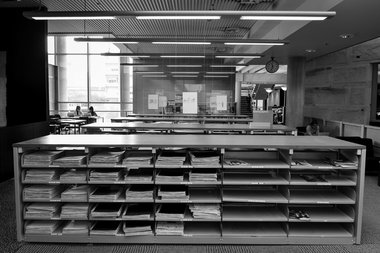
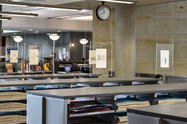
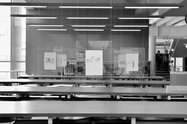
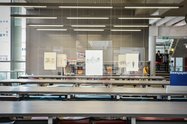


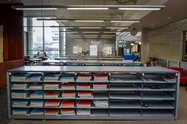

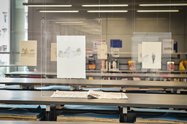



 Advertising in this column
Advertising in this column Two Rooms presents a program of residencies and projects
Two Rooms presents a program of residencies and projects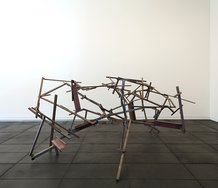
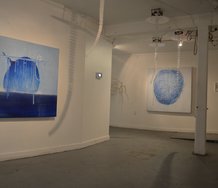
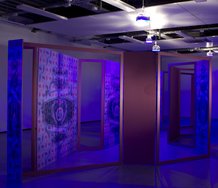
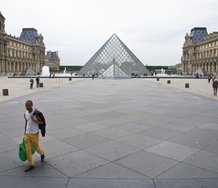
This Discussion has 0 comments.
Comment
Participate
Register to Participate.
Sign in
Sign in to an existing account.